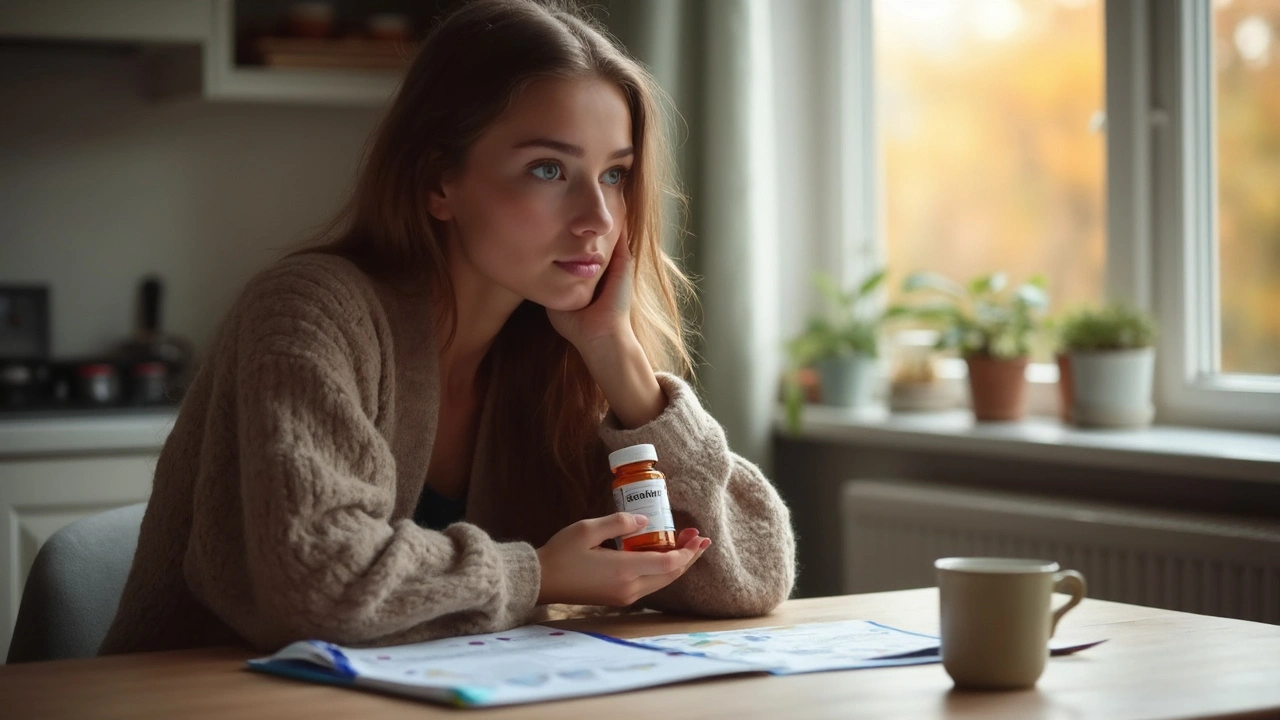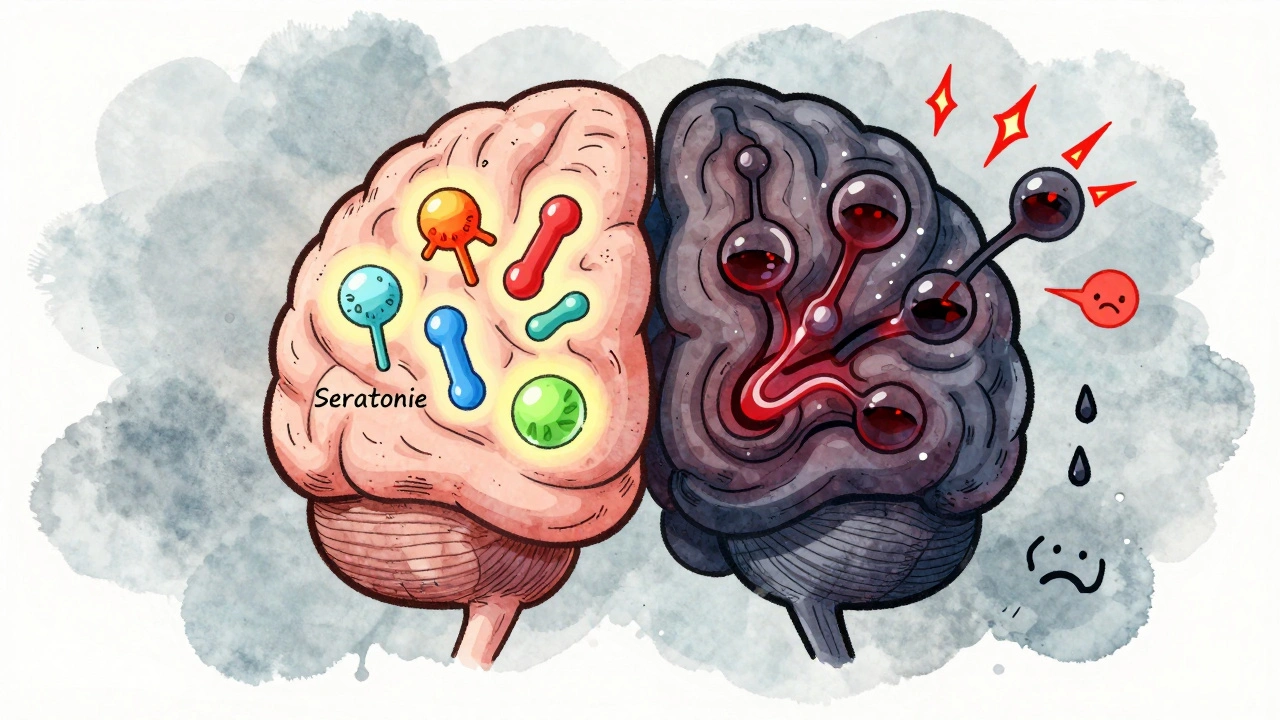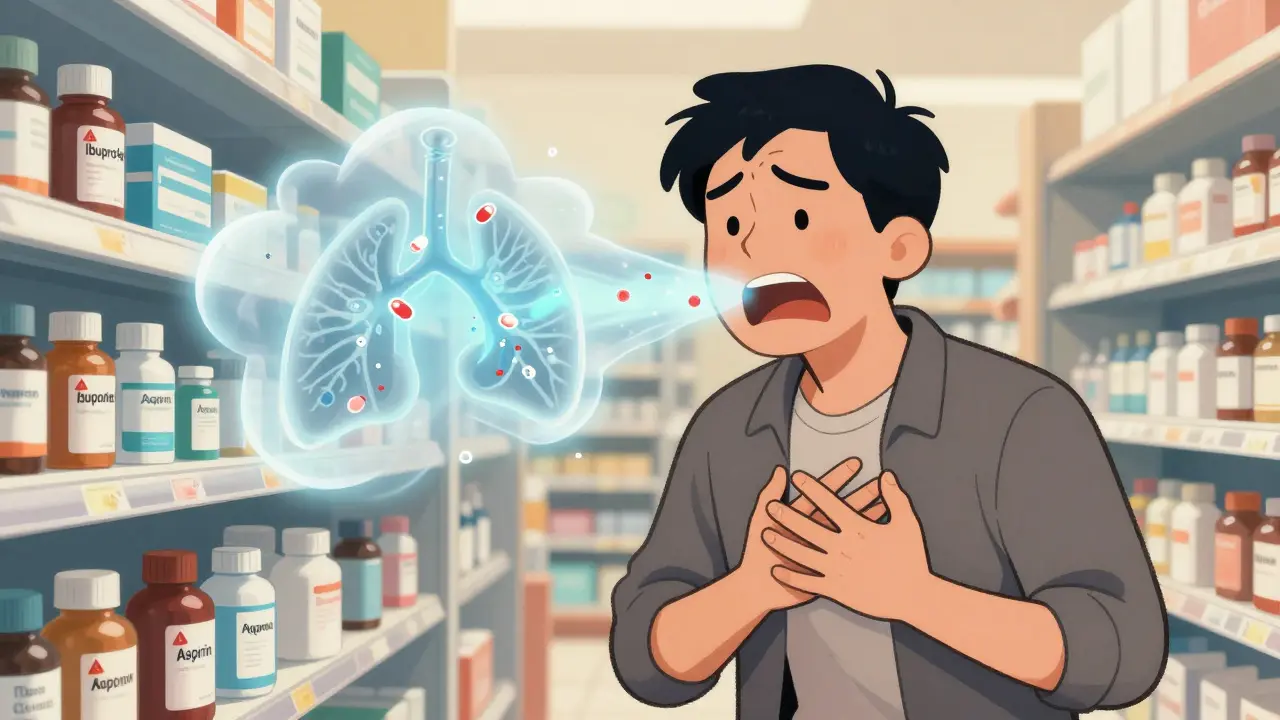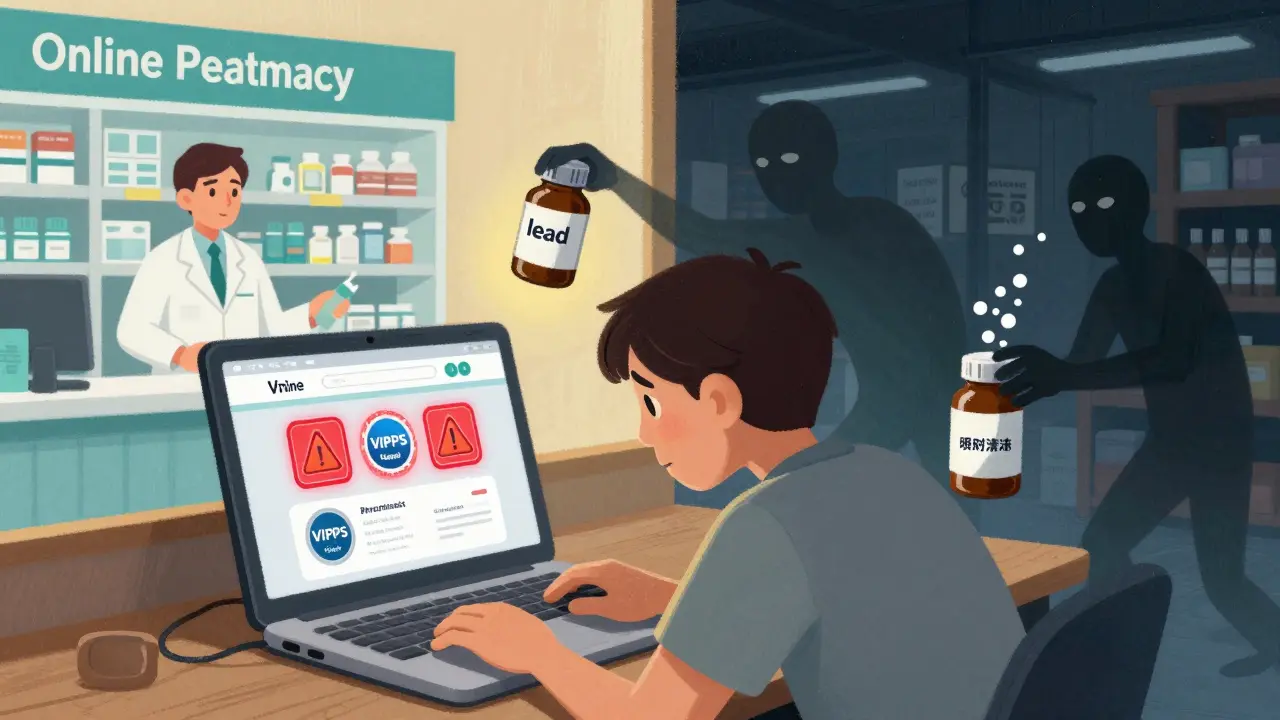Ever sat next to someone at a cafe, headphones in, eyes glued to their laptop, but noticing they keep checking the clock, sipping their cold coffee, and glancing around like they're trying to keep a dozen thoughts straight? That person might be riding the ADHD rollercoaster. Now, if you think they’re all chugging Ritalin or Adderall, you’re only half-right. There’s another player: Strattera, or atomoxetine if you want to get technical. Unlike stimulants that flood your brain with dopamine, Strattera is the stealth mode option—the only non-stimulant ADHD med approved by the TGA in Australia (and in heaps of other countries too). It’s been flipping the script on ADHD treatment since the early 2000s, but you rarely hear the real story outside a doctor’s office. So, here’s the no-filter run down: what it actually does, how it feels, the quirks and curveballs, and smart, honest tips if you or someone close to you is thinking about giving it a go.
Strattera Basics: How It Works, Who It’s For, and What Science Actually Says
So, what is Strattera, exactly? It’s not a stimulant like methylphenidate (think Ritalin, Concerta) or amphetamines (like Vyvanse). Strattera’s active ingredient, atomoxetine, targets norepinephrine—the brain’s wake-up chemical—by stopping it from being vacuumed up too quickly. That ends up boosting focus and impulse control, but with a very different day-to-day feel compared to classic ADHD meds.
Here’s a wild fact: researchers first tried atomoxetine as a potential antidepressant, but the big discovery came when people noticed it made them less fidgety and less likely to lose their train of thought. In Australia, Strattera is mostly used when stimulants either don’t work, aren’t tolerated (some people get anxious, moody, or have heart concerns), or when there’s a risk for misuse or dependency. Kids over six, teenagers, and adults can all be prescribed it. And since it’s not a controlled substance, you won’t have to lock the bottle away like gold, or stress at airport customs when you travel.
The mechanics are kind of genius—your brain gets a steady boost of norepinephrine instead of dopamine spikes. It means you’re less likely to get the typical highs and lows, crash out in the afternoon, or feel "wired." But patience is the secret sauce. Strattera doesn’t work overnight. Most people need to take it daily for three to six weeks to feel real effects, and sometimes it can take up to three months for everything to click.
If you want the data, check this out:
| Strattera Fact | Details |
|---|---|
| Approved Use | ADHD treatment for ages 6 and up (Australia, US, UK) |
| How long until effects? | Onset: 1-2 weeks; Full benefit: 6-12 weeks |
| How taken | Daily, usually once in the morning |
| Stimulant? | No |
| Chance of dependence | Less than 1% |
| Most common side effect | Stomach upset, trouble sleeping, dry mouth |
Science backs up its usefulness—multiple studies (like a big review in the Journal of the American Academy of Child & Adolescent Psychiatry, 2023) show that Strattera leads to noticeable full-day improvement in focus, organization, and emotional regulation for people with ADHD. It’s not quite as fast or punchy as meds like Dexamphetamine, but it’s not a half-measure either.
The flip side? About 1 in 3 people who try it don’t feel much difference, or can’t tolerate the side effects. Some get an upset stomach, loss of appetite, or headaches. Others have increased anxiety at first, but this often fades as the body gets used to it. The oddest (but true) downside: it can sometimes make it hard for men to finish during sex—something doctors sometimes forget to mention, but it’s real.
In some rare cases, kids and teenagers have reported increased suicidal thinking when starting Strattera, so psychiatrists recommend checking in regularly during the first few months. But the vast majority of people get through the first few weeks with nothing but mild, short-term nausea or sleep trouble. Definitely not something to ignore, but let’s not act like it’s radioactive either.

Real-World Experiences: How Strattera Actually Feels, What Surprised Me, and What No One Tells You
If you want to know what taking Strattera feels like, picture this: instead of rocket fuel, it’s more like finally being able to navigate Sydney’s morning traffic on autopilot, not missing turns, and not getting distracted by every billboard. That’s why people often describe the Strattera effect as subtle but steady—focus becomes easier, and the neverending thought-carousel slows down just enough.
One thing that caught me off guard was how quietly the changes creeped in. You won’t have an “aha!” moment where the world suddenly shifts into HD and you want to organize every closet in the house. Instead, you look back a month later and realize you finished your emails on time, remembered appointments, and didn’t get into an argument for no reason. A mate of mine said it best: "It's like the background anxiety dial just turned down a notch. I still get distracted, but I can pull myself back quicker."
That said, there are some quirks. The stomach issues? Definitely real, especially the first couple of weeks. If you’re taking Strattera on an empty stomach, expect some mild nausea or even heartburn. Most people figure out they feel better if they take it with food, or just after breakfast. Dry mouth pops up pretty reliably too—keep a bottle of water handy, or your mouth will feel like you’ve just eaten a packet of Tim Tams and chased it with rough sandpaper.
Another thing people don’t tell you: sleep may be trickier at first, even though it’s not a stimulant. Some report falling asleep easily but waking up at 4am wide awake. Shifting your dose from evening to morning usually sorts this out. And if you’re a coffee drinker, beware—caffeine can make jitters worse, especially in the first week. Try cutting back for a bit until your body gets used to the new normal.
Sexual side effects? Awkward but worth bringing up. About 1 in 10 men reports either delayed orgasm or struggle to climax. It’s not dangerous, but it can be weird for your relationship. This side effect sometimes goes away with a lower dose, or if you just give your body a month or two to adjust, but you should definitely let your doctor know if it feels like a dealbreaker. Women report lower libido too, but less often.
Kids and teens have their own journey on Strattera. Parents often notice improvement in schoolwork, self-confidence, and less drama around homework. One local Sydney paediatrician told me, "It’s a great option for kids with a family history of anxiety—much less likely to trigger mood swings than stimulants." Some get a mild headache or tummy aches, but these usually ease up. If your kid suddenly seems sad or withdrawn, bring it up, as it could be a sign they’re in that rare group experiencing mood changes.
Here are a few golden rules I wish someone told me:
- Always take Strattera at the same time each day to keep blood levels steady.
- Don’t skip doses—even if you feel “fixed.” Missing days can bring back symptoms fast.
- Track your side effects the first month—a basic diary works fine. This helps tweak the dose later.
- If nausea is a problem, breakfast with some protein helps more than just toast or juice.
- It’s safe to keep drinking coffee, but hold back your usual amount for the first two weeks.
- If you’re on other meds, talk to your doctor—Strattera can sometimes play oddly with antidepressants or asthma meds.
- No need to stress about “rebound” effects seen in stimulants. When Strattera wears off (takes about a day), it just fades quietly.
- Insurance in Australia usually covers Strattera if prescribed by a specialist for ADHD—worth asking about PBS pricing, since private scripts can get pricey.
Everyone’s body chemistry is a bit different. I’ve heard people swear Strattera felt just as transformational as stimulants—and others who chucked the bottle after a month. Knowing what to expect goes a long way toward a smoother ride.

Getting the Best Out of Strattera: Tips, Hacks, and FAQs from People Who’ve Been There
Here’s where it gets practical. If you’re about to start Strattera—or you’re supporting someone who is—little tweaks and planning can make the difference between it working like a charm, or being a daily annoyance you want to bin.
Start slow, if your doctor suggests it. Most specialists kick things off at half or even a quarter of the final dose, ramping up over a few weeks. That slashes the odds of nasty side effects. Don’t freak out if you see your dose climb after a fortnight—dosing is super individual. Some adults need just 40mg daily; others end up on 100mg. It doesn’t mean you’re “bad at ADHD” if your dose is higher or lower; it’s just your body doing its thing.
If you forget a dose, don’t double up—wait till the next scheduled time. Doubling up is more likely to bring on side effects, not superhuman focus.
Food (especially protein) makes a difference. Anyone who’s toughed out nausea will vouch that eating before your pill works wonders. But watch what time you eat, too: some folks notice a big dip in appetite, so a bigger breakfast helps get the calories in before Strattera kicks appetite to the curb.
Follow-up appointments matter. If you skip check-ins, you could miss small tweaks that make a big difference. Most people see their doc monthly at first, then space out once things settle. Bring a cheat sheet of what’s working (better focus, less fidgeting) and what’s not (gut issues, zapped energy).
If you start noticing weird or new mood changes, don’t wait. Call your doctor sooner rather than later. Especially for teens—tell your doc if you notice days of feeling low or any out-of-the-blue behavior changes.
Strattera doesn’t interact with alcohol the same way stimulants do, but moderation’s still wise. A drink or two won’t wreck your progress, but going hard can spike blood pressure and make you feel off. If you already have high blood pressure, let your GP know, as Strattera can nudge it higher in a small number of people. It also has a reputation for being safer with sleep—the all-day effect means you’re not chasing a crash late in the day, so sticking to a regular bedtime makes a huge difference.
On work or study days, make a simple checklist—one of the best side effects of Strattera is better follow-through, so taking twenty seconds to jot out 3-4 tasks in the morning can pay off big. People with ADHD are famous for big ideas and then forgetting the details, so take advantage while it’s working for you.
Got plans to travel? Strattera wins big points here. Since it’s not a stimulant or controlled med, you won’t face those awkward customs questions or need to bring a doctor’s letter (though it never hurts, just in case). Keep your dose in your carry-on. If you switch time zones, keep dosing on your “home” schedule during travel, then gently adjust by 1-2 hours each day until you’re synced up.
Parents juggling a kid’s first few months on Strattera: check in with their teacher, too. Even subtle shifts can boost grades or social confidence, but side effects sometimes show up at school before home. Teachers aren’t allowed to diagnose, but they can flag changes faster than a parent might spot after a busy day.
Here are some speedy answers to common questions I get around Sydney:
- Can Strattera make you sleepy? A few people feel sluggish at first, but most find energy gets steadier once their body adjusts.
- What if I want to stop? You can stop cold turkey—there’s no withdrawal risk—but check with your doctor to avoid a sudden return of original symptoms.
- Does it help anxiety or depression? Sometimes, but not enough to use it for those alone. If anxiety spikes, tell your prescriber right away.
- Can I drive or use heavy machinery? Yes, once you know how Strattera feels for you. If you feel dizzy or spacey, hold off until things settle.
If you’ve made it this far, you’re likely weighing the pros and cons. The honest answer is that Strattera is a solid option for people who can’t—or don’t want to—use stimulants. Not everyone gets a miracle, but for the right person, it really can make navigating each day a bit less of a challenge. Try to keep expectations grounded, keep chatting with your healthcare team, and see what works best for your unique brain. And if you ever spot someone actually sipping hot coffee in Sydney and NOT getting distracted, maybe they’re another one who finally found their fit.







Heather Wilkinson
June 14, 2025 AT 11:56Great rundown, really helpful! 🎉 Strattera is definitely a solid option for those who want a non‑stimulant route. I love that you highlighted the importance of taking it with food to curb nausea – that tip saves a lot of hassle. Also, the reminder about checking in with your doctor early on is gold. Keep the positivity coming! 😊
Henry Kim
June 14, 2025 AT 13:53Thanks for sharing this, it’s a thorough look at what many miss. I’ve seen a few folks feel anxious at first, but as you noted, those feelings often settle after a couple of weeks. Consistency really is the secret sauce; missing doses can bring the symptoms right back. It’s also encouraging that the side‑effect profile is generally mild compared to stimulants. Stay patient and keep tracking those subtle changes.
Neha Bharti
June 14, 2025 AT 17:30Strattera can be a steady alternative for many.
Samantha Patrick
June 14, 2025 AT 21:06Absolutely, the consistency tip is key – I always set a reminder on my phone so I don’t miss a dose. Also, try taking the pill with a protein‑rich breakfast; it really helps the stomach settle (definately better than taking it on an empty belly). If you notice dry mouth, keep a water bottle handy – it’s a simple fix that many overlook. And yeah, you can keep your coffee, just cut back a bit at the start until your body adjusts. Hope that helps!
Ryan Wilson
June 15, 2025 AT 00:26It’s a little ironic that people chase a quick fix with stimulants while ignoring the fact that a steady, non‑addictive option like Strattera exists. Sure, the side‑effects sound "minor," but the moral of the story is that we should be more responsible about medication choices instead of glorifying the hype around instant performance. Let’s not forget that every prescription carries weight, and we owe it to ourselves to consider the long‑term health impact.
EDDY RODRIGUEZ
June 15, 2025 AT 04:36Wow, what an exhaustive guide – thank you for pulling all this together! I want to add a few extra pointers that might help anyone just starting out with Strattera. First, give yourself a solid 4‑week window before judging its effectiveness; the brain needs time to adapt to the norepinephrine boost. Second, keep a simple daily log – even a quick note on your phone about focus level, mood, and any tummy trouble can guide dose adjustments later on. Third, if you experience that early‑week insomnia, shifting the dose to earlier in the morning usually solves it – many people don’t realize timing can make a world of difference. Fourth, stay hydrated; dry mouth is common, and sipping water throughout the day can keep you comfortable and also help with any mild constipation. Fifth, don’t underestimate the power of a protein‑rich snack with your pill; it smooths out the gastrointestinal side‑effects better than a carb‑only breakfast. Sixth, be mindful of caffeine – a couple of coffees a day is fine, but tapering during the first two weeks can prevent jittery feelings. Seventh, if you notice any sudden mood swings or thoughts of self‑harm, reach out to your prescriber immediately; those rare cases need close monitoring but catching them early makes all the difference. Eighth, the sexual side‑effects you mentioned are real, but they often lessen after about a month; if they persist, discuss dose tweaks with your doctor. Ninth, for parents, involve the teacher in the early stages – a quick note about any positive shifts in class can reinforce confidence for the child. Tenth, insurance in Australia does cover Strattera under the PBS, so double‑check your eligibility to avoid unexpected costs. Eleventh, when traveling across time zones, keep the dosing schedule based on your home clock for the first couple of days, then gently shift to the new local time. Twelfth, remember that stopping Strattera abruptly is generally safe, but a brief taper can help if you’re particularly sensitive to a rebound in ADHD symptoms. Thirteenth, combine the medication with proven behavioral strategies – a daily planner, Pomodoro timer, or simple break‑down of tasks amplifies the benefits. Fourteenth, give yourself credit for any improvement, however small; ADHD management is a marathon, not a sprint. Finally, stay connected with a community of fellow Strattera users – sharing experiences can provide reassurance and practical hacks you might not find elsewhere. With patience, consistency, and a bit of self‑care, many people find Strattera transforms their day‑to‑day life in a subtle but powerful way.